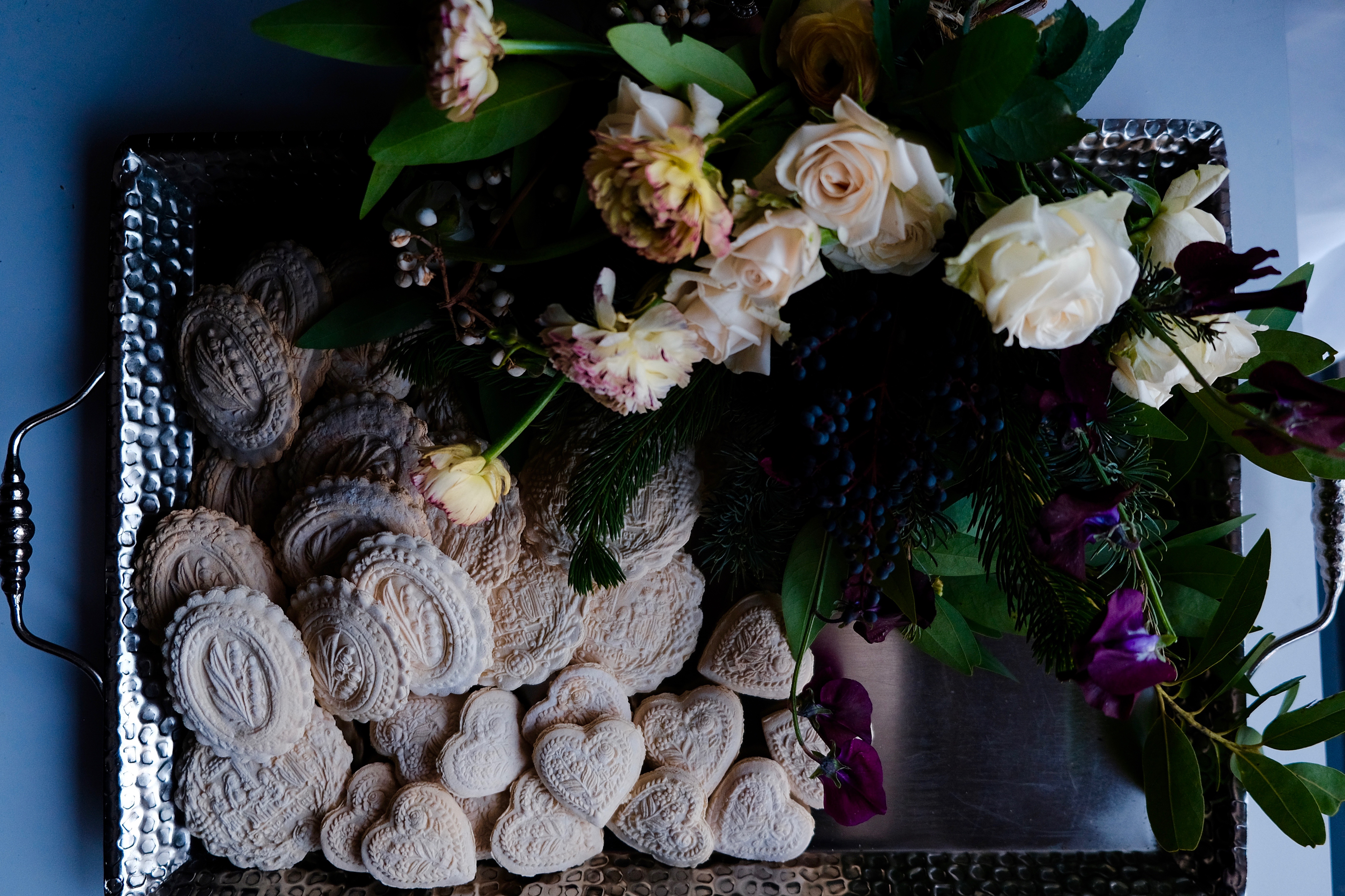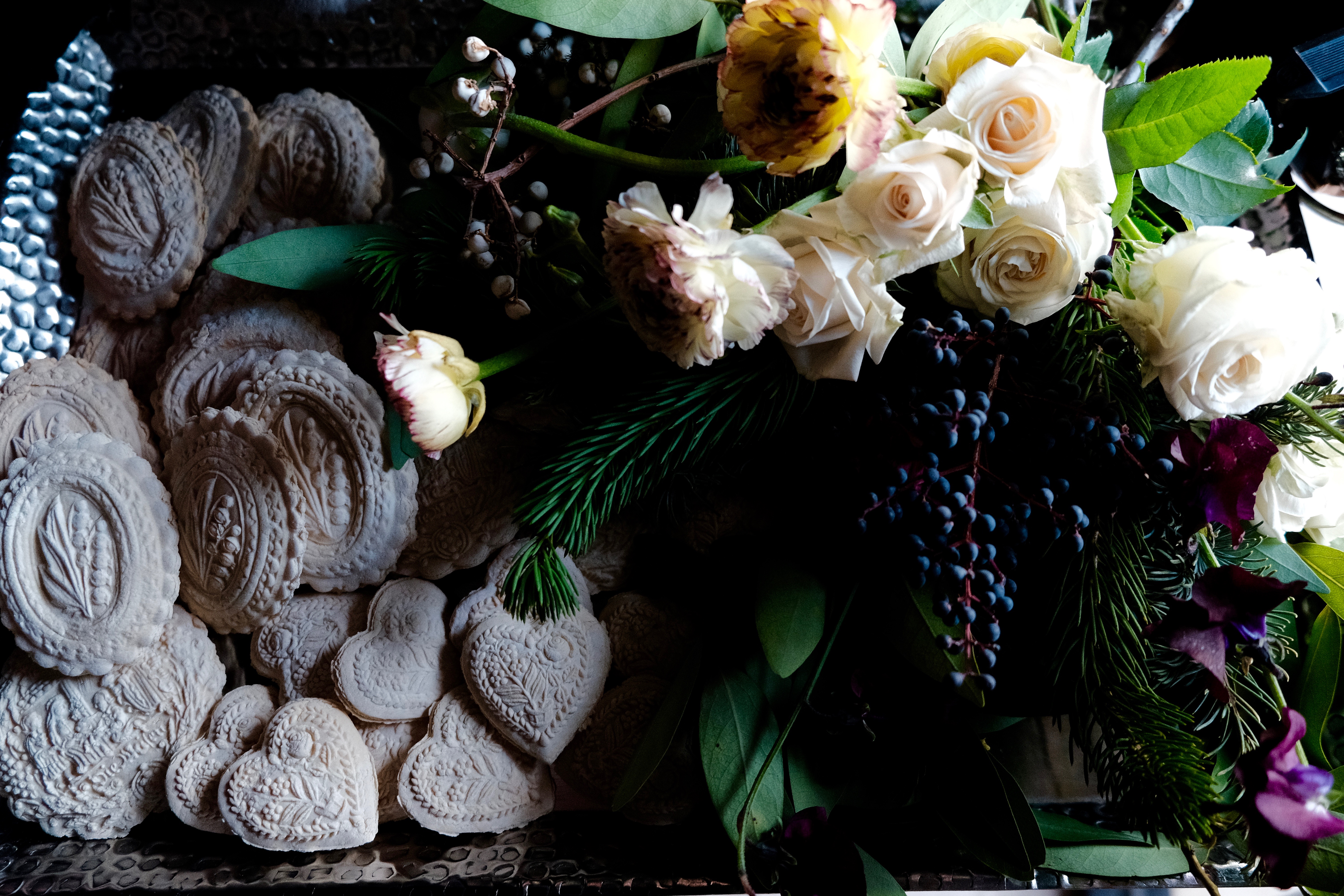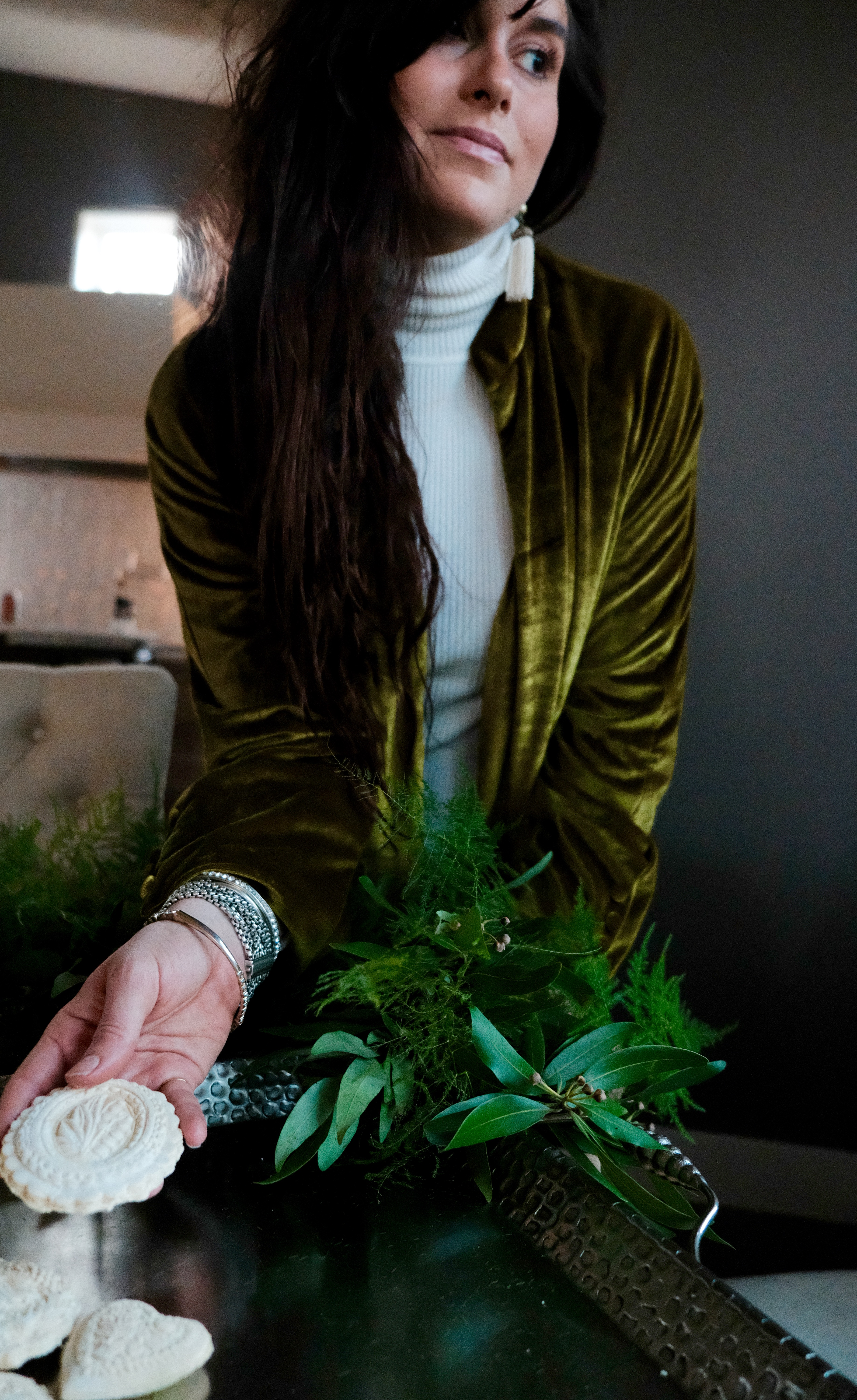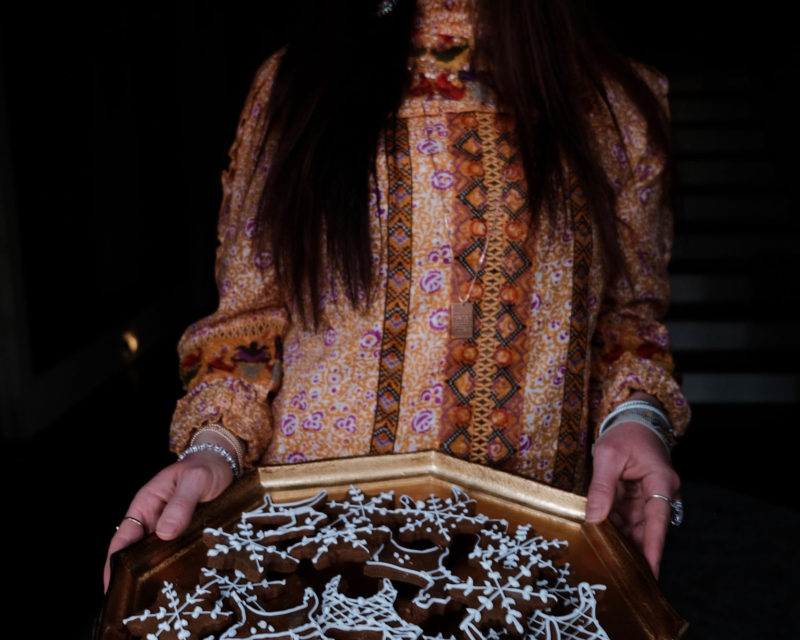Winter. It’s the season of frost and greens, wreath-making and ice-skating, twined packages and candlelight services. It’s my season. I love winter’s particular magic, love winter fashion, and the look of things buried under snow. I surround myself with white flowers, because they feel hopeful and reverent, like December. Aromatic branches are beautiful to bring into the home, and lay on tables and mantles. Every so often, I like to forage in the bracing cold, cutting down branches and greens, preferably with frost clinging to them. When it comes to music, only the prettiest Christmas hymns & standards will do– nothing kitschy. “It Came Upon a Midnight Clear,” destroys me, in the best possible way.
Winter rituals really mean everything– I romanticize all of them, and the sense of nostalgia they bring. I love to fill a home with garlands, wreaths, and greens. I cherish the familiar readings of the Magnificat and the Nativity passages in Luke. And there are all the little gestures of winter and Christmas… Tying a bit of evergreen onto each package. Keeping a bit of mistletoe around. And baking cookies, in my case, Springerle cookies.
I first discovered Springerle cookies on a wedding blog, and instantly was enamored. I’d never seen something so small so completely capture the essence of Christmas. These little cookies are exquisite and homey. And isn’t this just the flavor of Christmastime? It’s the season of miracles and also of mundane joys– the season that fills us with awestruck wonder, and simple longings for home.
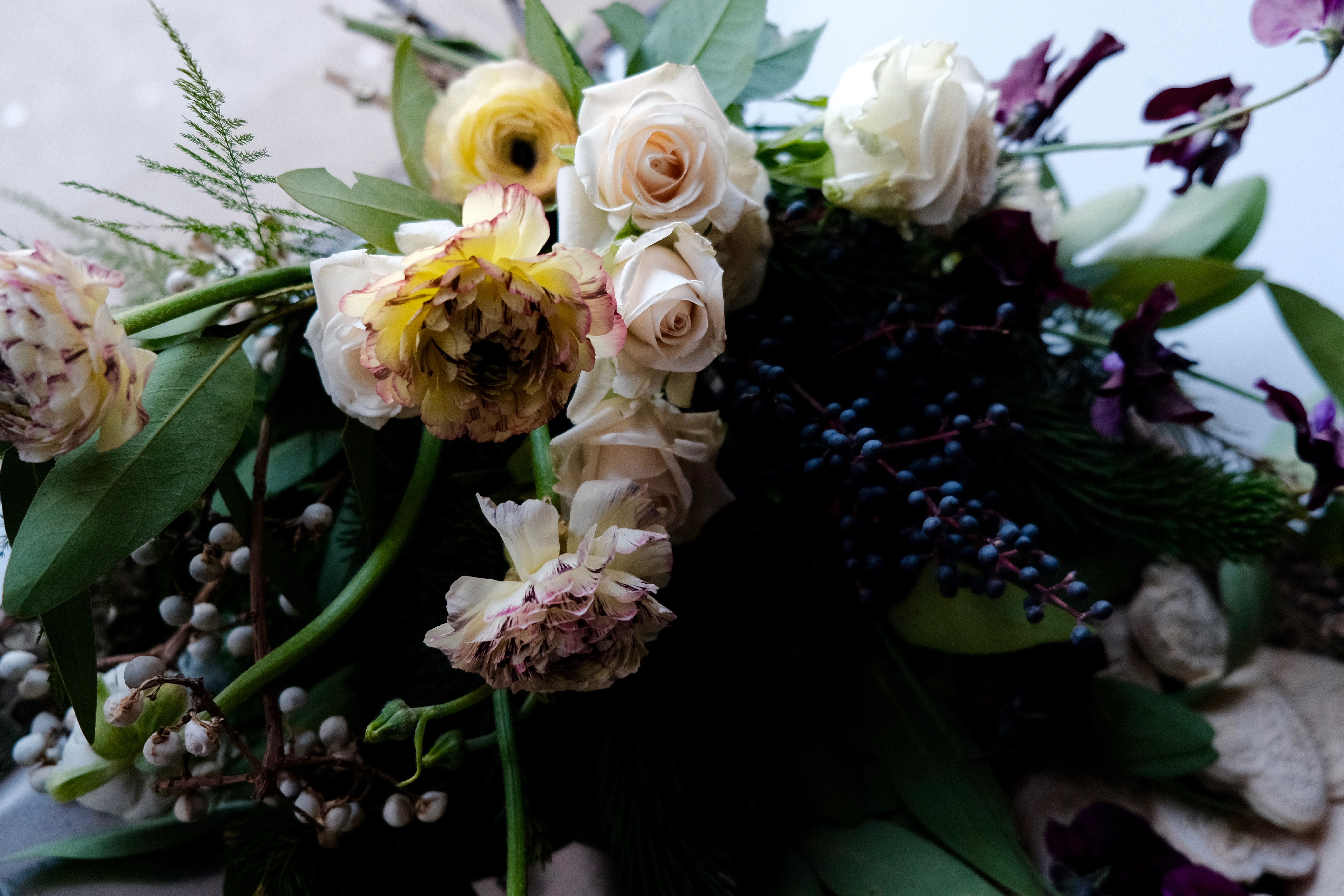
And this is what I look for in a Christmas ritual—something that reminds me of the wonder, beauty, and miracle of Christ and Christmas, and something that grounds, comforts, and reminds me of home.
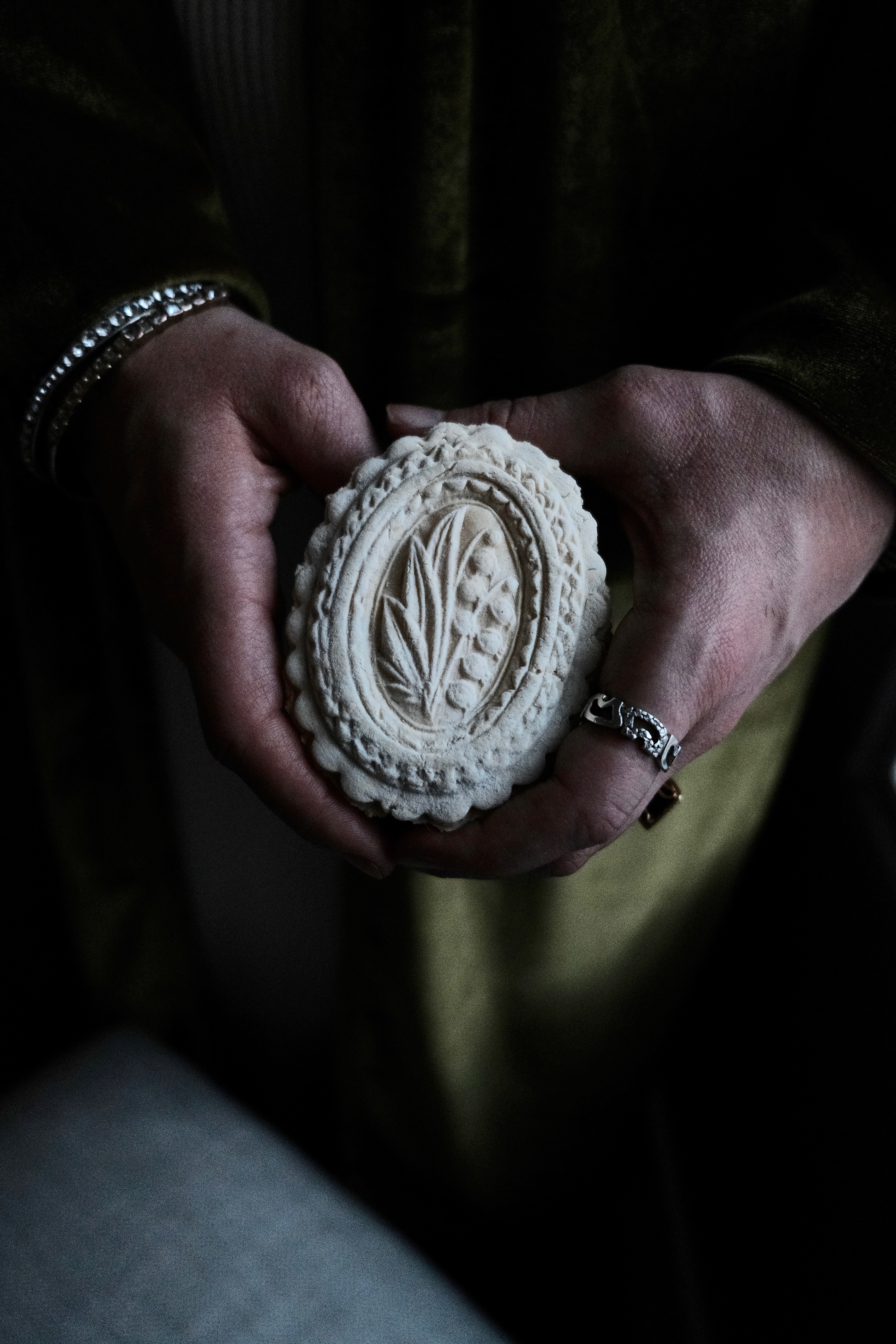
So I set out to make Springerle for simple gifts, and also for a pretty homemade tree ornament. Springerle are native to Germany, and popular in Switzerland, Bavaria, Alsace, and Bohemia, and date as far back as the 14th c. A white, anise-flavored cookie stamped with pictures, Springerle was possibly developed in monasteries, alongside Church host, another type of “Bildergebäck” (baked goods with pictures). Originally, the cookies were printed with ornate religious and especially Christmas motifs and given as educational tools for those who couldn’t read or write. Later, as they were adopted as beautiful gifts for weddings, baptisms, and betrothals, Springerle expanded to include scenes appropriate for each of these occasions. They continue, however, to be most powerfully associated with Christmastime—in several countries, Springerle were exchanged much in the way that we exchange Christmas cards. With their simple egg-flour-sugar dough, Springerle are humble but beautiful tokens of goodwill. The fun of Springerle is in choosing your pattern; I spent more hours than I’d like to admit picking out the perfect molds (Nativity, heart, and lily of the valley). I think they would be beautiful piled in a basket and given as simple gifts to surprise and bless your loved ones.
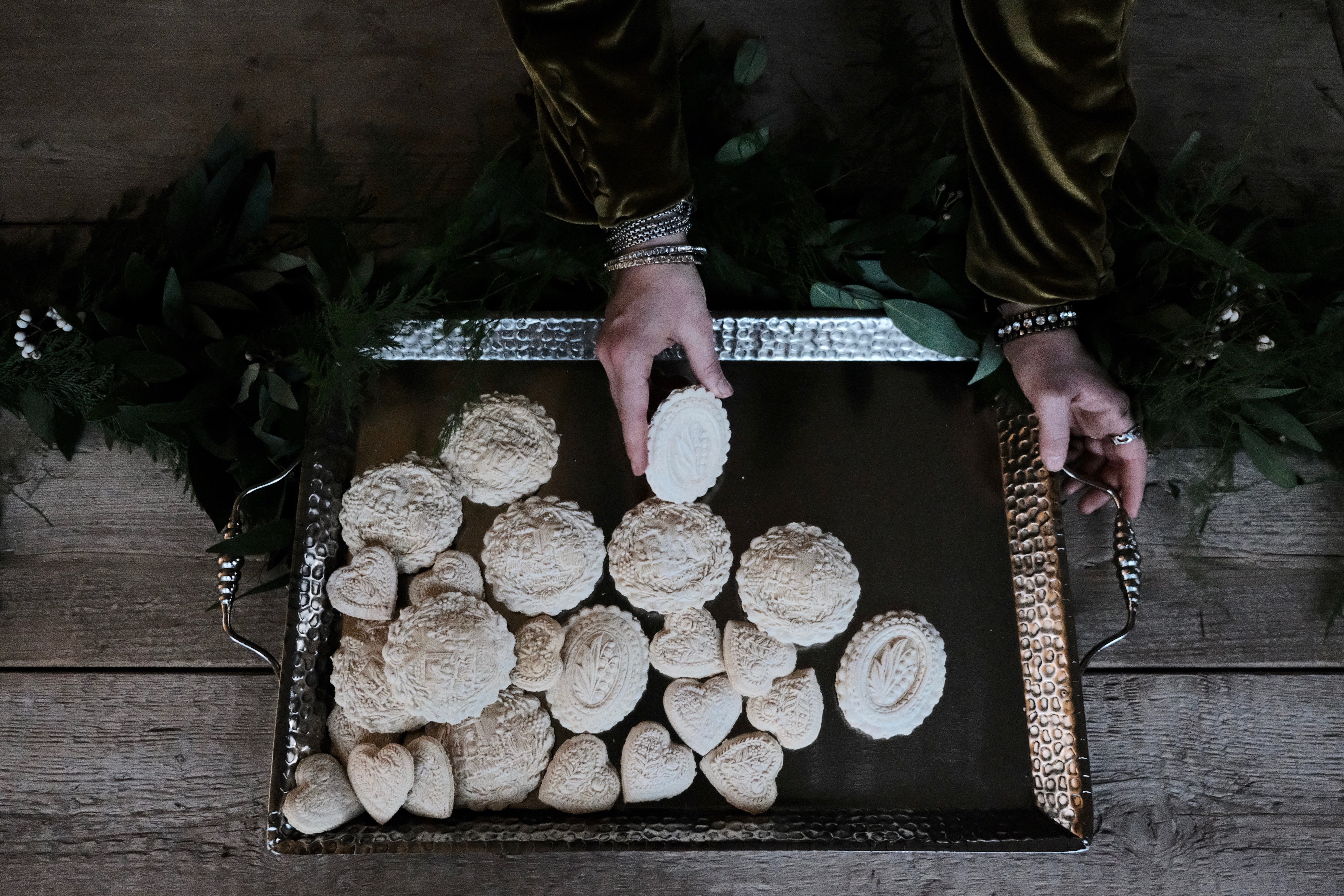
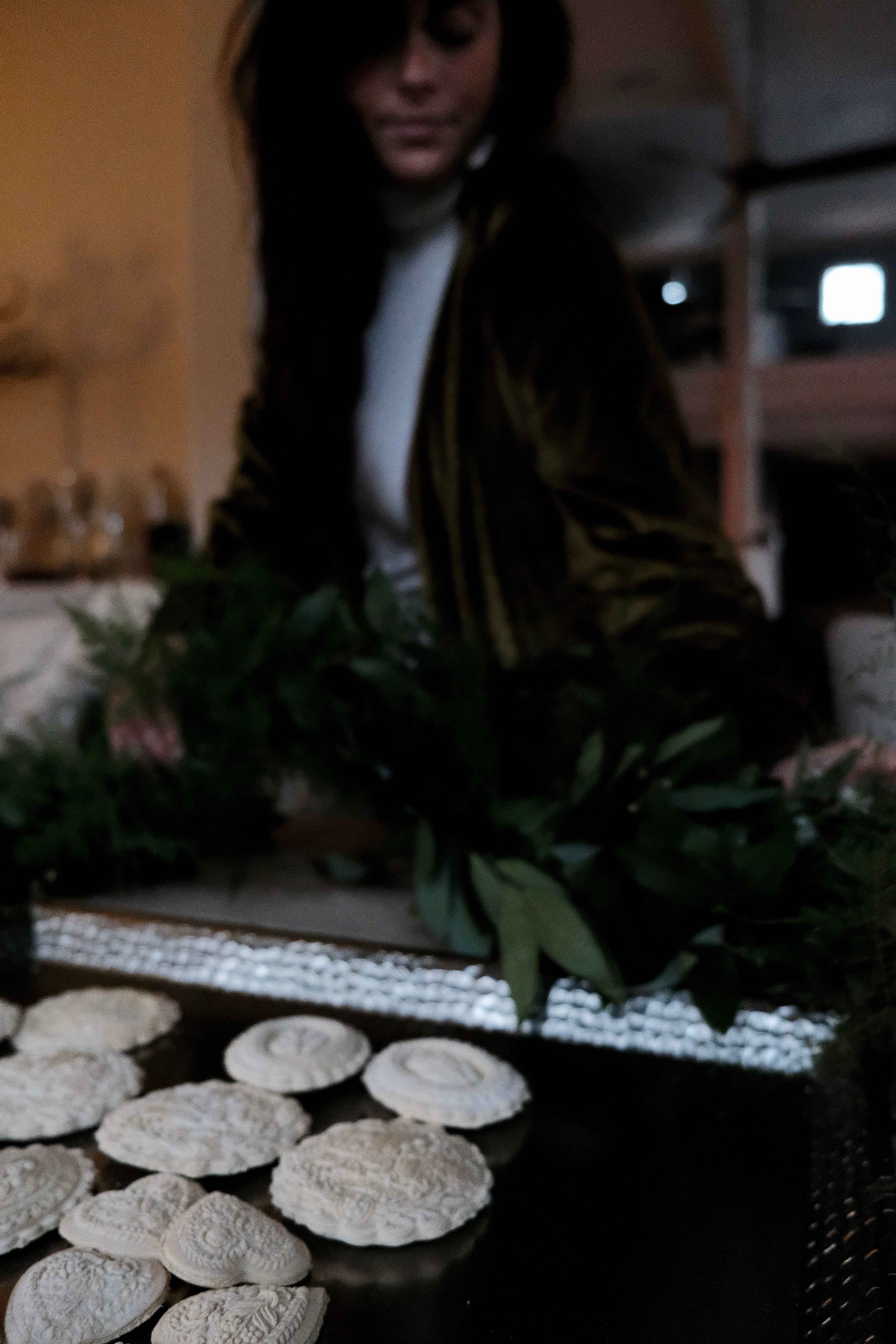
Baking Springerle was a beautiful addition to my host of Christmas rituals. And the best Christmas rituals lead us into givenness. It’s nice to go a little out of your way to create something beautiful for someone. I think, when we do things that are somewhat unnecessarily beautiful, it’s a kind of proclamation– that life is worth living, and love worth pursuing, and generosity and givenness worth the effort. I read something to the effect recently– that when we tie our time, resources, and talents to other lives, that’s when we live richly. Something as simple as baking a batch of cookies can cut through holiday loneliness or doldrums. Dropping off a basket to a friend– the smallest act of love– can extend your happiness for a week. Love is so vast, it can only be contained in the smallest of acts. And I think that these cookies look like the very picture of love.
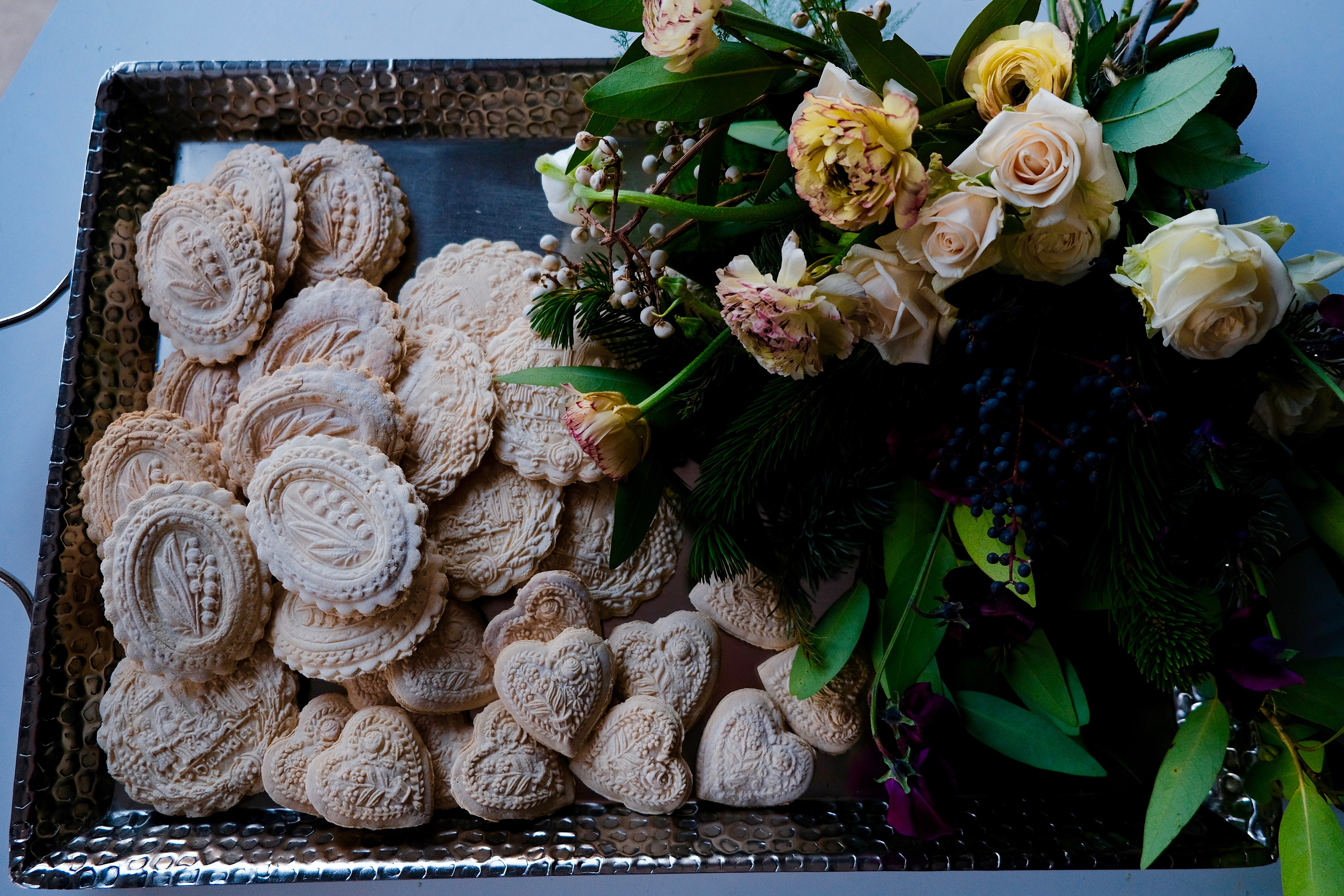

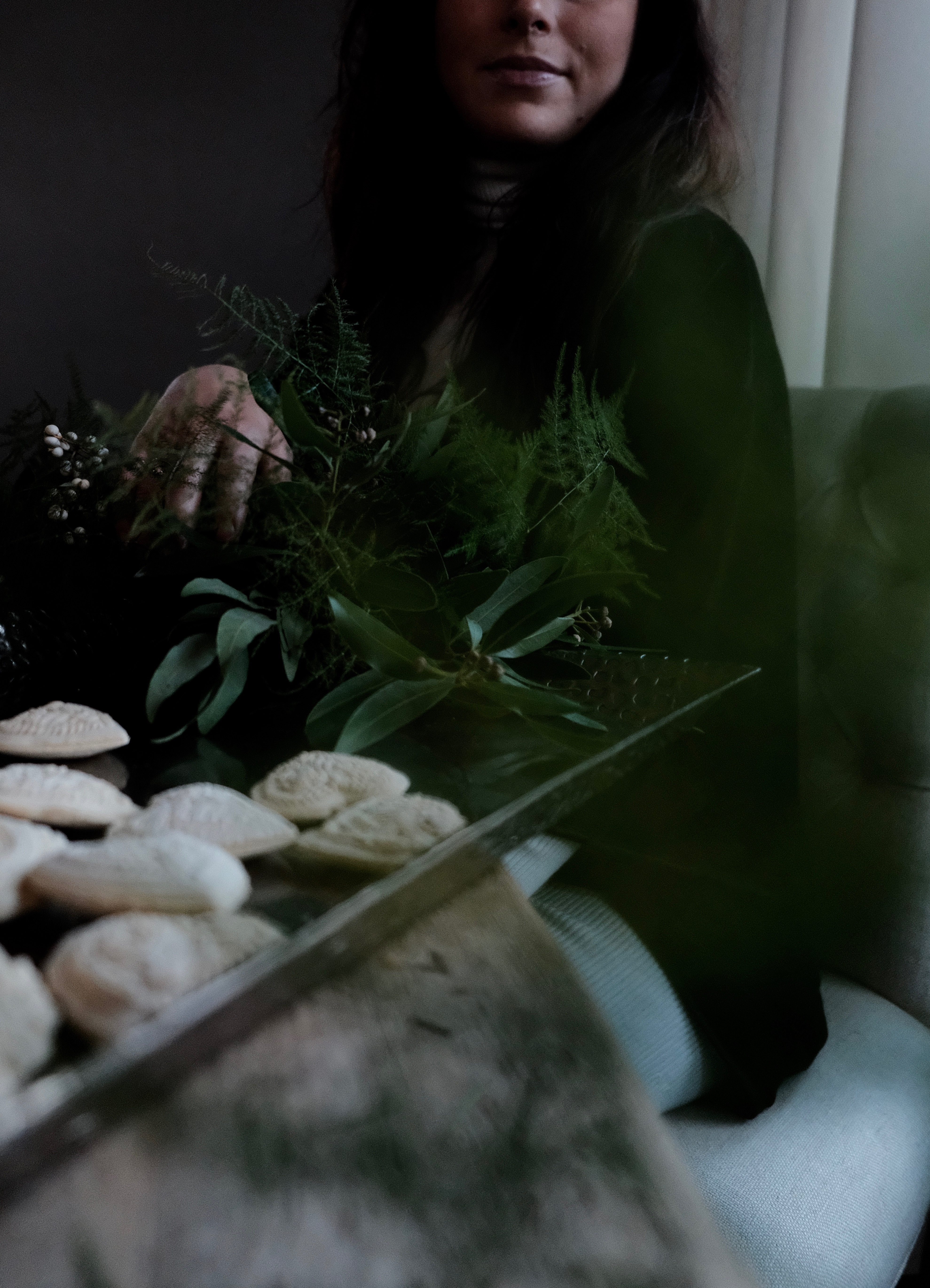
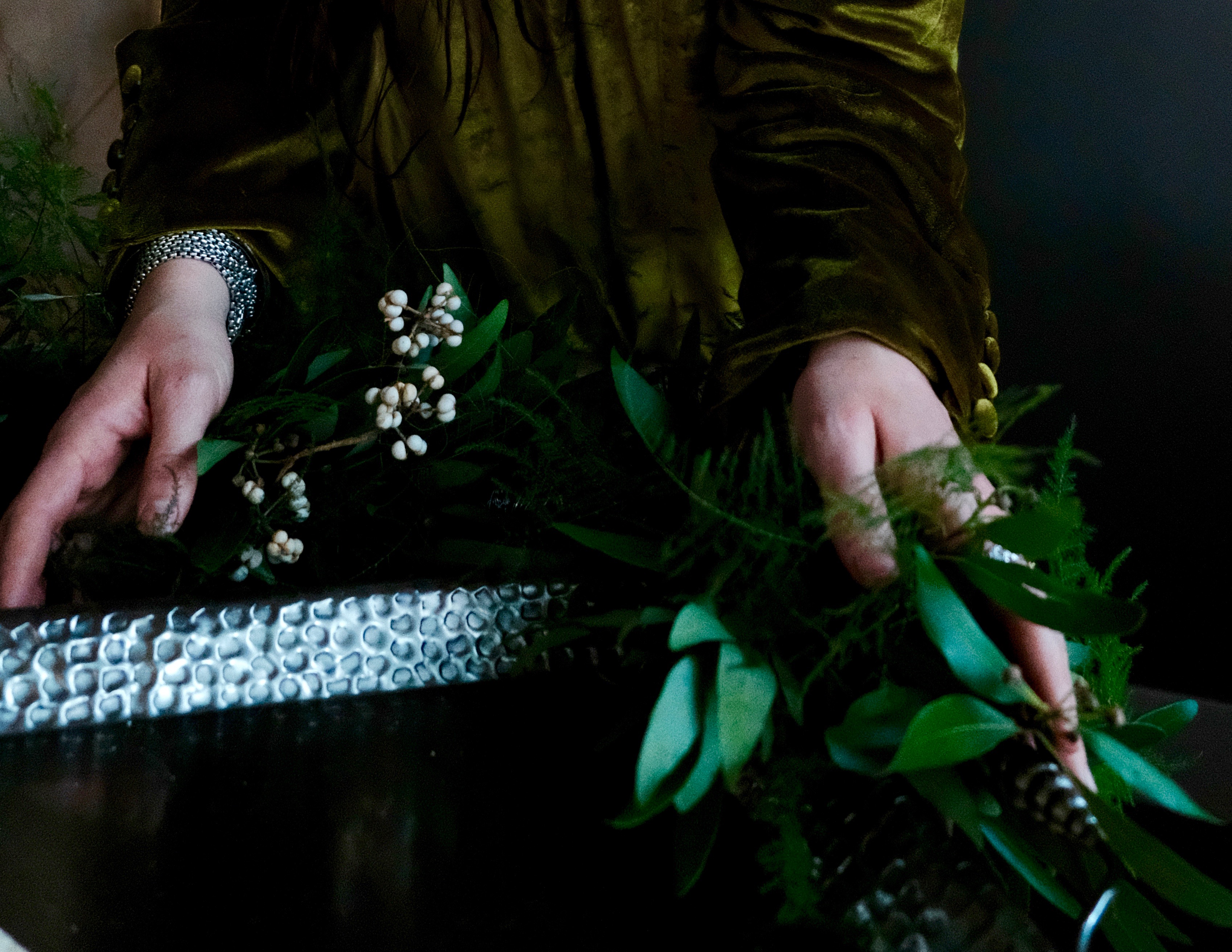
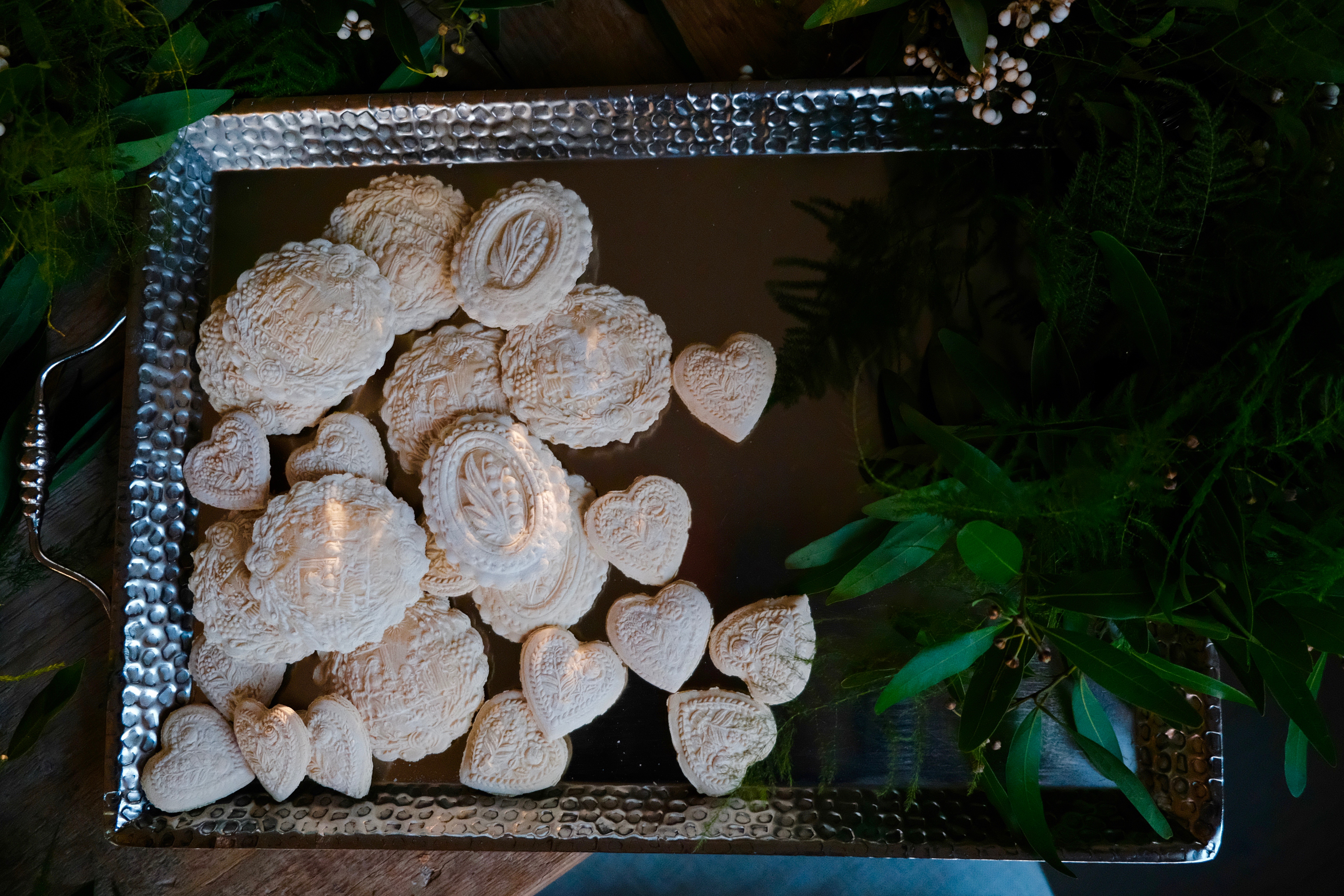

My prayer is that each and every one of you would experience some kind of Christmas miracle. An answered prayer. A healed relationship. Rekindled or deepened faith. A piece of good news. Someone to love. Or maybe just peace—peace with God through His rich grace in Christ– which is the greatest miracle. And in the meantime, I wish you comforts of home, small graces, and meaningful rituals. My wish is that you would be very much surrounded by love this Christmastime.

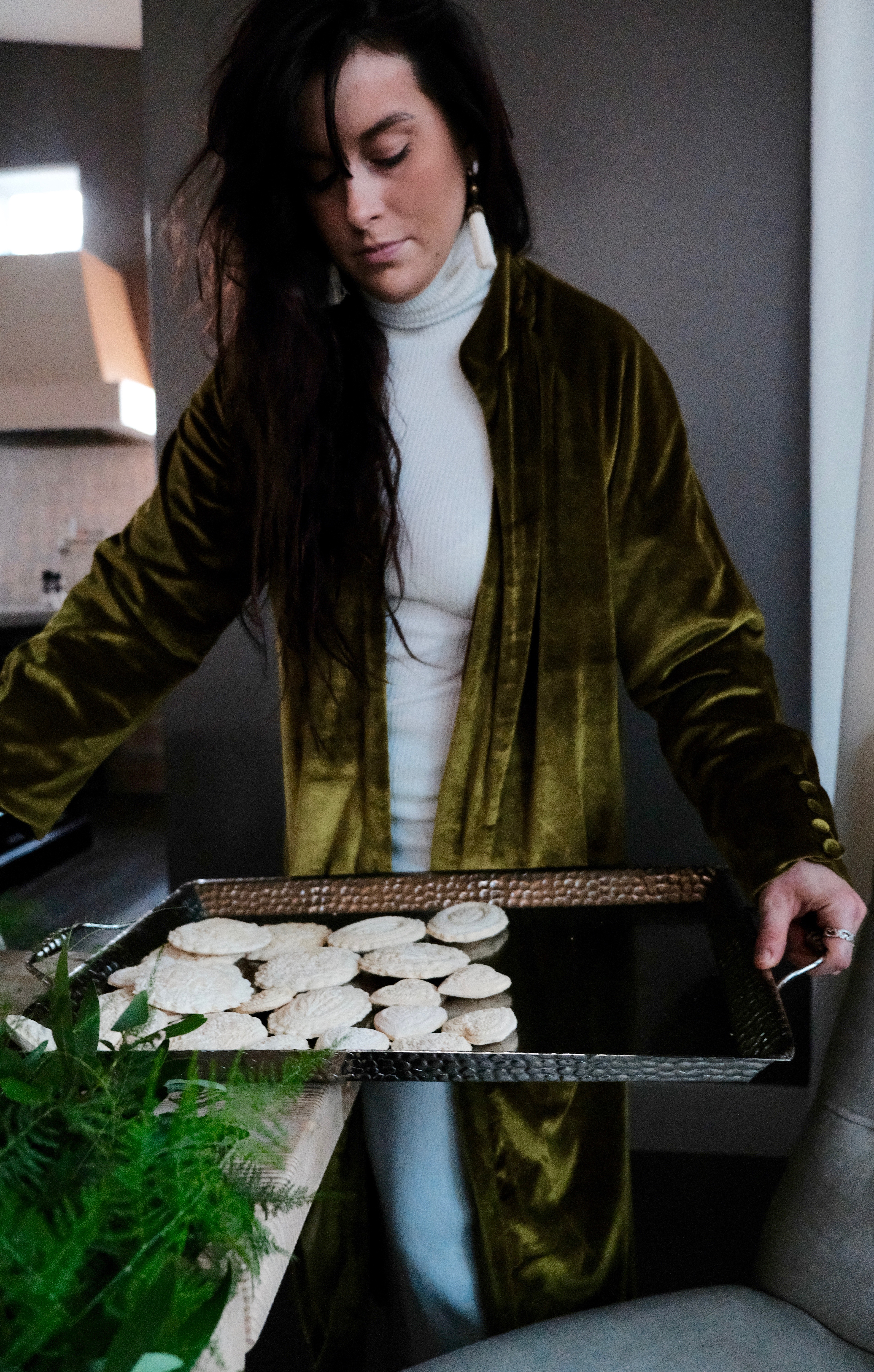
The recipe here is reprinted from springerlejoy.com, the source I also used for cookie molds. I wanted the traditional Springerle experience and opted for an anise cookie. The flavor elicits strong reactions either way, so if you’d like a crowd-pleaser, a vanilla or citrus oil would work well. Springerle require patience—don’t all the worthwhile things?—and you will want to follow the dough rest and drying times. If your dough is dry, as mine was, add water to your hands as you work with it. You’ll find that the extra care is worth it when you stamp your first perfect cookie, and then watch it bake into the puffiest, prettiest treat.
Please visit https://www.springerlejoy.com for more recipes, cookie molds, and information on Springerle.
- 9 large eggs (USDA Grade A Large in the US) at room temperature
- 2 lb powdered sugar
- Flavoring options (choose only one edible flavoring oil from the following)
- –1 tsp. Lorann™ anis oil -or-
- –1 tsp. Lorann™ almond oil – or-
- –2 tsp. any Lorann™ fruit flavoring oil (orange, lemon, raspberry…) -or-
- –4 tsp. Lorann™ vanilla, vanilla butternut, bavarian cream, or cinnamon roll flavoring (these flavors tend to be light)
- 2 lb cake flour
- Parchment paper to line cookie sheets
- Beat the eggs well until the mixture turns into an airy crème. (About 6 minutes using a KitchenAid™ 5qt. stand mixer with the wire whisk attachment.) Immediately, with the mixer on low, add the powdered sugar by ½ cups until all sugar is incorporated and mixture is fluffy. Add the flavoring oil while mixer is on low speed.
- Immediately switch to the flat paddle attachment and gradually beat in ¾ of the flour on low speed. For hand mixers,knead in the last quarter of the flour by hand or use the bread hook attachment. For stand mixers, beat in the last 1/4 of flour with the paddle attachment. Let the dough rest for 30 minutes to two hours covered on the dough surface with plastic wrap, or cover the top of the bowl with a dish damp dish towel. You need to keep the dough covered to prevent drying on the surface.
- Note: In low humidity conditions, do not knead in all the flour. Reserve about a cup. Let the dough rest 30 minutes to two hours. During that time, the flour in the dough will continue to absorb the liquid. You may find that you don’t need to add the cup you reserved.
- In humid conditions, you may need to add more flour. If your dough droops quickly off the paddle attachment and is very shiny, you can add more flour (maybe a 1/2 cup) before resting. But when in doubt, let the dough rest 30 minutes first.
- After resting, if the dough is still saggy/droopy knead in more flour. You want it at a consistency that just holds its shape while still being form-able. It should have the softness of a firm pillow. You can knead in the flour during Step 4, one dough part at a time.
- Divide the Springerle dough, which still will be sticky, into six parts. Cover the bowl with a damp towel to keep the dough parts moist. Take out one piece and knead in just enough flour so that it is slightly sticky. Roll out on a well floured surface so that it is 8 mm thick using dough guides or about 3/8″. Lightly dust the rolled dough with flour so that the dough feels like silk. Dust your Springerle mold with flour using a pastry brush. Now press the very finely dusted mold evenly into the dough until the mold cavity is filled, and remove. Cut out the molded dough with a suitable pastry cutter or a knife and place on a baking sheet that has been lined with parchment paper.
- Next, dry only the top surface of the cookies at room temperature, either on your cookie sheets or on parchment. Do not dry them on a baking rack! You do not want to dry underside of the cookies–you need the bottom moist in order to develop a foot (rise) while baking. Drying time is typically 8-12 hours at room temperature, 24-36 hours for very humid conditions, thick or large diameter cookies. Never refrigerate the cookies while drying; you need room temperature to evaporate the moisture on the top of the cookies.
- To minimize sticking for your small- and medium-size cookies: five minutes before baking, turn the cookies over and dust the bottoms generously with flour. Then turn them back over with the design facing up and slide them around a little bit on your parchment. Do not do this with giant cookies–you risk breaking them.
- Bake the Springerle one baking sheet at a time at approx. 300ºF on the very bottom rack of the oven. Put like-sized cookies on the same sheet.
- Small cookies (2.5″ dia.) can be done in 10-14 minutes at 300°F while larger cookies may take 14-20 minutes and are best baked at 285°F. Giant cookies (10-14 inches in diameter) will take 30-60 minutes and are baked at approx. 260ºF.
- Cookies are done when the bottoms are a light golden brown. When baking these cookies for the first time, bake just a few on a baking sheet and check often to see how long your cookies take to finish. Everyone’s oven is different. We suggest you get yourself an oven thermometer if you don’t have one.



